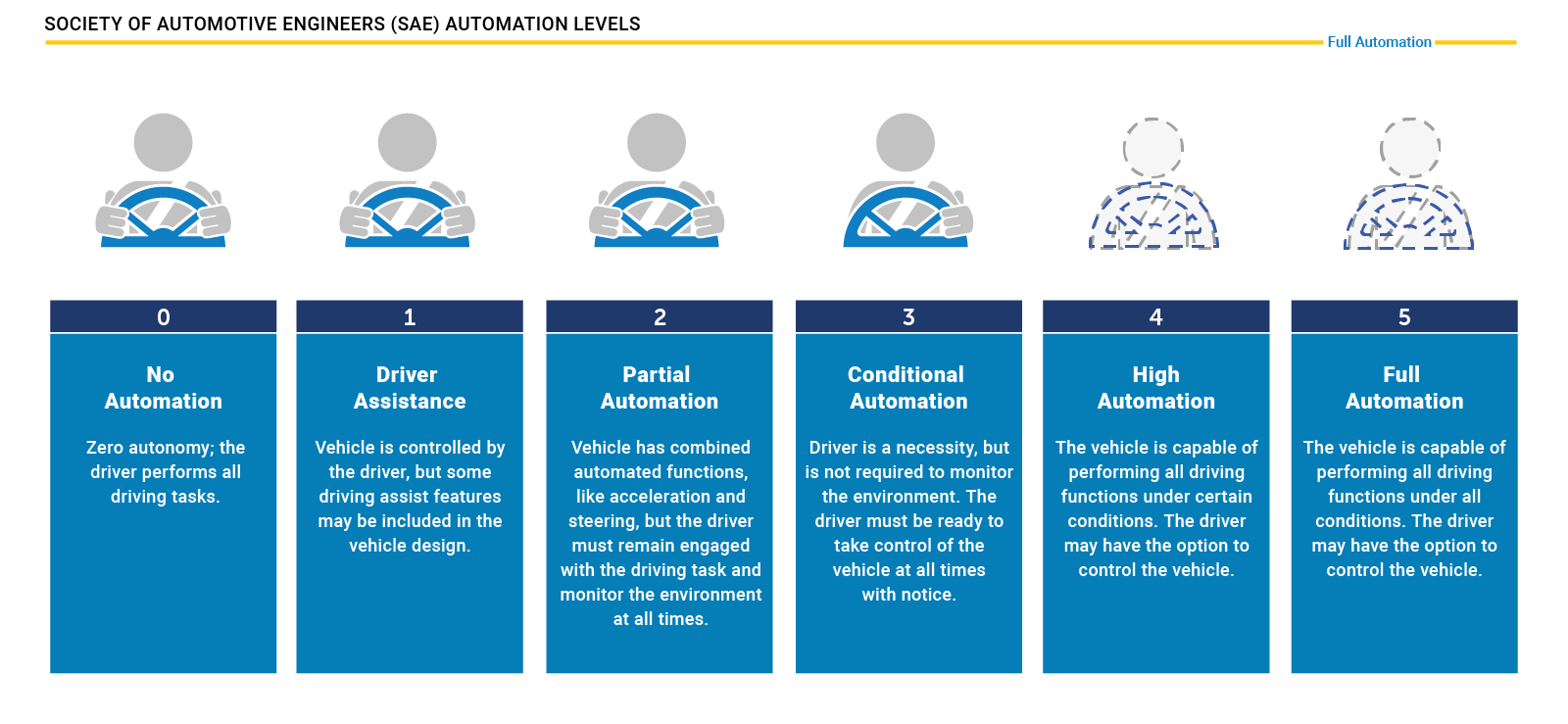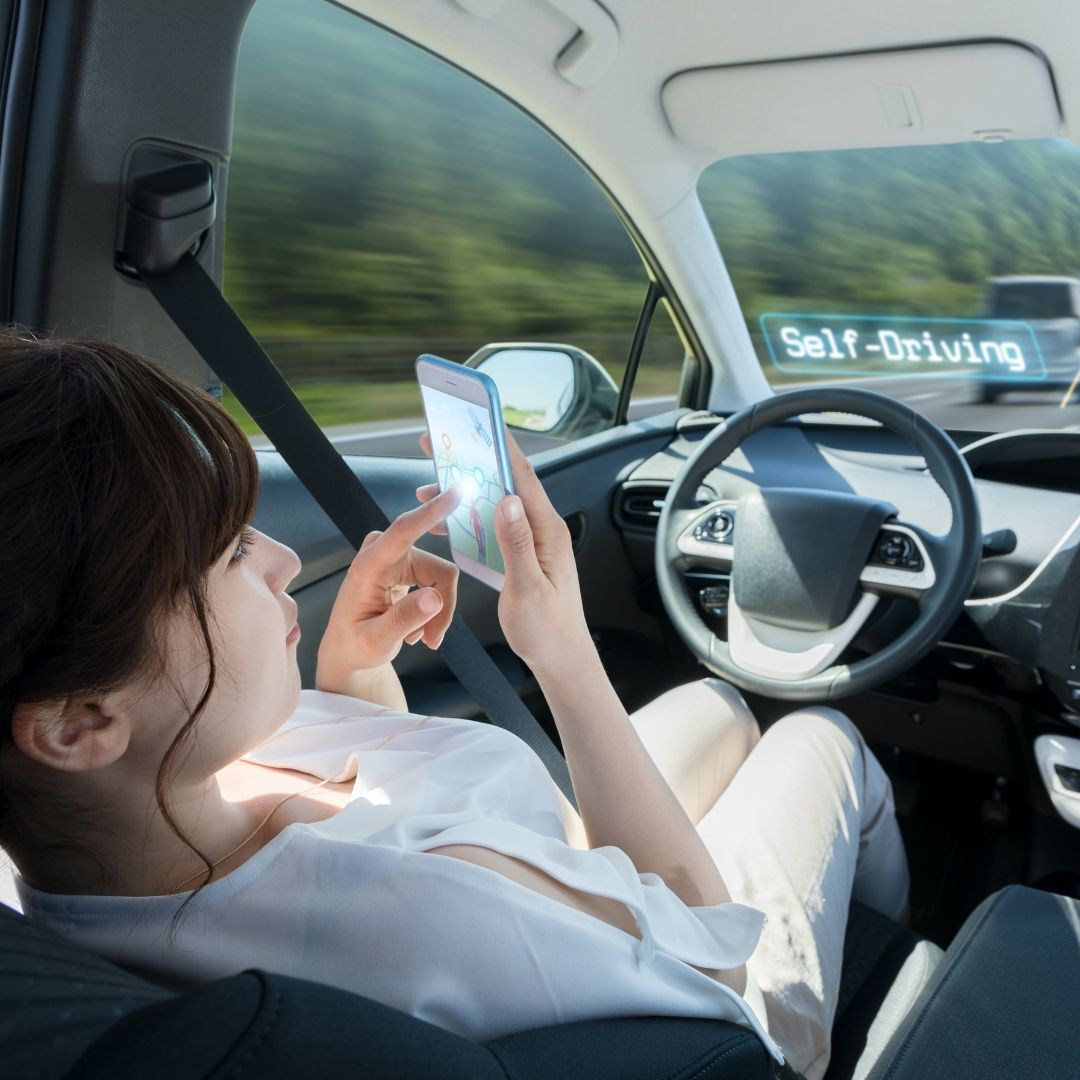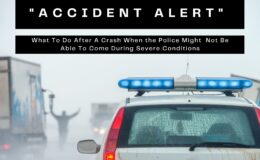The Jetsons got it wrong. The future won’t be full of flying cars, it will be full of robotic ones driving us by land. And that future is here now. You may already have heard buzz of the research being done by companies from Google to Volvo, each vying to be the first to market with the car of the future. But what does “automated driving” mean right now, and what does it mean for you?
Currently, the state of automated driving tech is varied. Some cars, like those made by Tesla, can only assist the driver by letting them know when it’s safe to merge lanes or exit freeways (we’ll talk more about Tesla later, because they make some big promises with the potential for equally big legal consequences). Others, like those Google is working on in California, have already driven millions of miles without human assistance. To categorize the functional disparity between all of these cars, the Society of Automotive Engineers (SAE) has developed a ranking system on a scale of 1 to 5, with 0 being no automation—the driver does everything—and 5 being full automation—the car does everything.

Fully automated Level 5 cars are expected to be in full production by 2025, according to the National Highway Traffic Safety Administration, and they won’t just be consumer products. The commercial trucking industry is already in the throes of a paradigm shift. In 2016, Budweiser shipped a fully automated tractor trailer of beer across the Colorado interstate without a driver behind the wheel. “For me, it comes back to this: Technology can help us save lives,” CNNquoted Shailen Bhatt, executive director of the Colorado Department of transportation, as saying at the time. Bhatt is correct, in the long run. When automated vehicles become ubiquitous they will save countless lives. But right now, they are in their infancy.
The Current State of Driverless Cars and Collision Liability
Today, different companies produce vehicles with different levels of automation. Laws regarding driverless vehicles differ from state to state. And although they are much safer than traditional cars, they’ve already been involved in a few crashes here and there. With automated cars and trucks beginning to populate the roads at higher rates than ever before, what happens and who is responsible if you’re in a collision with one?
Let’s start with Colorado law, which defines an “automated driving system” as any Level 4 or 5 automation system that is “collectively capable, without any intervention or supervision by a human operator, of performing driving tasks.” As for who would be liable in a crash involving an automated driving system, state law only goes so far as to say that liability is determined “in accordance with applicable state law, federal law, or common law” (C.R.S. 42-4-242-5). In other words, we won’t know how liability is handled in these situations until a driverless accident occurs.
Car manufacturers have taken a variety of stances on the issue, with each manufacturer concerned about its own interests. Volvo, for instance, stated in 2015 that it would accept all liability stemming from vehicles equipped with its proprietary self-driving system. In 2017, when a driverless Uber Volvo hit and killed a woman in Phoenix, Arizona, Volvo claimed that they held no liability because the software on the involved vehicle was not made by Volvo. Moreover, if past conduct by corporate defendants is any indication, Volvo is not likely to make good on its offer under any circumstances. At best, they will offer only a fraction of the value your case is worth. Volvo’s assurance of liability is essentially a small cost for them to deter you from engaging in litigation. It’s a small promise dressed up to look big.
Tesla, meanwhile, seems unfazed by the concept of potential litigation. Their website promises full automation on all current models for a $3000 upgrade package when you order. A video on the page depicts a Tesla driving itself across several miles of intersections and backroads. But the language on the site is misleading. A small section of text on the page informs, “Features will continue to be introduced as validation is completed, subject to regulatory approval… Every driver is responsible for remaining alert and active when using Autopilot and must be prepared to take action at any time.” If you buy a Tesla today, you’re only buying hardware that the company plans to update through software later. A Tesla won’t drive itself home from the dealership. Several crashes have occurred because Tesla drivers misunderstood the self-driving capabilities of their car, including a fatal one last year in Florida when a man plowed at full speed into a tractor-trailer, and another fatality earlier this year where the Autopilot vehicle crashed at full speed into a concrete highway divider. A video posted by the now deceased owner of the former vehicle shows him marveling at how, “The car is doing it all itself!”
When asked for comment, Tesla reiterated its talking point that Autopilot does not prevent accidents and stressed that drivers are responsible for taking control when the system fails. But as Jalopnik reports, the Tesla Autopilot system is fundamentally unsafe. In crash tests conducted by British safety testing group Thatcham Research, the Autopilot system crashed repeatedly in simple tests. Reports keep pouring in of Tesla vehicles colliding with parked or stationary cars.
The Bottom Line
With automated driving systems legal in Colorado, and more experimental systems like Tesla’s available every day, it’s only a matter of time before collision cases involving these vehicles start showing up in court, forcing a clearer ruling of liability in driverless vehicle collisions. If you or someone you love is injured in a collision involving a driverless vehicle, the grey areas and complexity of the law may not come down on your side. To collect the compensation you deserve, the first thing you need is an attorney equipped to navigate this new frontier of injury liability cases. If you have questions, reach out to us at Porya Mansorian and Associates. We’re tackling the future of personal injury, today.


